You’ve heard how mindfulness meditation can bring calm to your life and you keep a strict discipline of meditation 15 minutes each day. As you tackle daily chores as you usually did, you wonder why there seems little improvement to your focus, emotion, and stress.
After all, isn’t mindfulness meditation about giving you a better reign of your mind?
Before you start casting doubts on mindfulness practice, let’s take a look at a more relatable experience. You’re thinking of getting rid of belly fats and you sign up for the local gym. You’re committed to spending at least an hour in the gym daily, but you’re sticking to the usual lifestyle and diet habit the rest of the day.
Is it surprising that there’s no shrinking to your belly fat? No. Because all your efforts in the gym are undone the moment you stepped out of it. The same applies to mindfulness practice. To have a profound effect on your life, you’ll need to take the fundamentals of mindfulness meditation and apply it in daily life.
1. Instant Mindfulness
The best way to extend mindfulness into your daily life is to kickstart your day with a mindfulness meditation session. Even if you’re having a packed schedule ahead, block off a couple of minutes in the morning and practice mindful breathing.
You may want to make mindful breathing the first thing you do when you woke up from sleep. There is a moment before your mind is assaulted by the string of worries and you’ll want to take advantage of that.
Start by closing your eyes, bringing your attention to breathing and note the physical sensations on the abdomen or nostril. If your thoughts wander, bring it back to the breathing gently. This express-version of mindfulness meditation will help to start your day on the right track.
2. Bring Awareness To Daily Tasks
Instead of going through the motion, you’ll want to take on daily chores differently. For instance, taking a shower is often a rush to get ready for work where you start worrying about possible events instead of being mindful of the present.
Spare yourself from draining mental energy unnecessary by nothing your intention, sensation, and thoughts even when you’re showering or grooming. Look at different tasks in your routine where you can spare some moments to be mindful, such as commuting, eating, drinking or doing the dishes.
Mindfulness practice is being practical. There are tasks where you can’t be mindful all the way, but you can focus on specific movements, such as lifting a pen or dropping litters into the bin. These little acts of mindfulness can make a great difference when done consistently.
3. Mindful Communication
Words are a powerful weapon that could heal or hurt. Yet we went through conversation daily like a mindless robot. Are you guilty of flipping contents on your mobile casually while talking with your child? Or quick in rebutting your co-workers’ ideas without giving them some thoughts.
Take this mindfulness challenge and pay full attention to the person you’re talking to the next time. Listen, not for the sake of replying, but to understand the message and emotion conveyed. Pay attention to any negative emotions that arise as during a conversation and you can avoid saying words that you’ll regret later.
Injecting a little mindfulness into routine conversation helps to change the dynamics of the relationship to the better. By taking conversations seriously, you show respect both for yourself and the third party. Conversations become cherished memory rather than random moments.
4. Mindful Eating
As we’re trapped in a hectic lifestyle, meal time is reduced to hastily chomping foods while browsing hundreds of emails. You may finish your meal in rocket speed but remember nothing of the taste. In short, you are robbed off enjoying a fulfilling meal.
When you’re eating mindlessly, you’re not being aware of what you’re consuming. As you take lesser bites than required, you’re putting a burden on your digestive system. What’s worse is you’re not savoring the food that has been carefully prepared.
You can bring mindfulness to the table by taking one bite at a time. Be aware of the sensation as you lift the food into your mouth and chew away. You could also invoke a feeling of gratitude as you ate because in some parts of the world, having a simple meal is a luxury.
5. Drive Mindfully
Many people turned into rage-filled individuals when they are behind the wheel. Emotions run high when they are being overtaken on the road or trapped in bad traffics. If you’re one who is impatient when driving, you ought to remind yourself to be mindful.
Mindfulness when driving is more about being aware of your thoughts, particularly anxious thoughts when you may be late for an appointment. Such thoughts often gave way to frustration and rage, where you resort to blasting horns to vent your anger.
Make driving a mindful practice by noting the moments where you’re getting frustrated. By acknowledging the emotion and not reacting to it, you’ll find that the frustration eases away eventually. Driving in calmness reduce the risks of getting into accidents.
6. Mindful Parenting
You’ve read dozens of parenting books and how you shouldn’t yell at your children. You’re determined to be the exemplary parent as modeled by various child experts. As your child spilled an entire plate of half-eaten food on the floor, your resolve crumbled and you start yelling at a terrified kid.
Sounds familiar?
Parenting was never easy and it’s tough to be the perfect parent. But with mindfulness, we can reduce the episodes where we gave in to our frustrations and lament in regrets later. Besides being aware of the bubbling frustration, mindful parenting helps you to develop empathy and understanding of how a child thinks.
For instance, your child may be constantly bugging you for his or her favorite toys. Instead of telling your child off with a straight ‘no’, you may question if you’ve been spending too little time with your child. Mindfulness is all about staying in the moment and you’ll want to spend quality time with your child.
7. Stop Multitasking
At a certain point, we’re all guilty of multitasking. Replying emails, while trying to chat on the phone and watching Netflix simultaneously. Or trying to make an omelet and pasta, which stretches your attention to the max. Often, the result is not pretty.
Multitasking is everything mindfulness is not. In fact, scientists have linked multitasking to deterioration in brain functions. You’ll be tricked into believing that you’re more productive because multitasking makes you feel busy. Instead, you often achieve less when you multitask.
Stay focus on a single task that you’re working on. If you find the urge to start a new task, mindfully note the thoughts and bring your focus to what you’re currently doing. It’s about applying what you’re practicing in meditation into your tasks.
8. Managing Anger
It’s usual to feel anger. That’s what being human is all about. But if you are constantly losing control to anger, you’ll need an extra dose of mindfulness. It is not about suppressing your anger, because that never works. Instead, being mindful means disassociating yourself with angry thoughts.
In other words, you shift your focus on the angry emotions instead of blindly reacting to them. It sounds difficult, but definitely achievable with constant practice. You know that it’s working when the angry thoughts start to diffuse and logic starts to reclaim control.
The tiny gap between anger and reaction is only visible to individuals who practice mindfulness constantly. When you’re mindful, a fraction of second is all you need to stop yourself from doing something foolish.
You can apply mindfulness to other negative emotions like anxiety, regret, frustration, and sadness as well. Being mindful of emotions is probably the toughest part of the practice, but it’s worthwhile as you prevent emotions from overwhelming your senses.
9. Slow Down
You can walk slowly and yet not spend a moment of mindfulness. On the other hand, you could be efficient and stay grounded in the present. Mindfulness is about slowing down, but not literally. It’s about drawing your awareness to your senses completely.
When was the last time when you walk through the garden and be marveled by the wonder of nature. Being mindful means taking a stroll and be aware of the environment, and not playing through dozens of worries in your head.
Sometimes, you need to slow down in order to move further. This is applicable in various aspects of life. If you’re blindly tackling tasks after tasks, you’ll be unable to figure out the right direction or obstacles that lie ahead. You know it’s time to slow down when you’re overwhelmed by stress but with little results to show.
10. Self-Development
It’s natural that you crave progress and you’re willing to spend on motivational courses, self-help books, and mentors. You may progress to a certain extent as it’s undeniable that learning from others is quite effective. But to exceed your limit, you’ll need to seek a better understanding of yourself.
Mindfulness, besides being a useful concentration technique, also helps you to connect with your inner-self. As you keep up with mindfulness meditation, you’ll have a better insight into the pattern of your thoughts. This is helpful when you’re often sabotaged by bad habits that are hard to break.
Use mindfulness to be more aware of your thought process and starts catching thoughts of procrastination when it first appears. You’ll be amazed at how much you could discover within yourself when you choose to be unaffected by the constant noise of the surrounding.
11. Walking
You’ve probably walked hundreds or thousands of steps in a single day, with barely any of it in mindfulness. Walking is a mundane activity that is best to practice mindfulness. In fact, walking mindfully is almost similar to walking meditation, one of the formal practice of mindfulness.
It doesn’t matter if you’re walking from the living room to the kitchen, or from the lobby to your office. You can practice mindful walking in any circumstances.
Pay attention to each step that you take and note the sensations on your foot. You could take quick steps if you need to and still being aware of your steps. That doesn’t mean you disregard your surrounding which can be pretty risky. Instead, bring your awareness to your eyes and ears while alternating with the footsteps.
12. Self-Love
In your pursuit of career, family, and relationships, you may have unknowingly neglected caring for yourself. You could only offer as much as you have. Self-love is key in ensuring your personal well-being and practicing mindfulness is a great way to do that.
As you turn your focus onto yourself, you’ll be aware of the emotions and needs that lurks on the background. It may be loud and clear when you are mindfully focused that you need a break to recharge spiritually.
When you stop denying yourself the care you deserve, you’re able to give more to your family. And it all starts by taking some mindful moments to reconnect with yourself.
13. End Your Day With Mindfulness
Ever had your mind whirling like a vortex hours after you left work? And the mental turmoil can cause insomnia and prevent you from getting the much-needed sleep. Even if you manage to fall asleep, you’ll wake up feeling drained as your mind remain restless during your slumber.
You may have realized that the mind is like a wild monkey, and seldom obey your wishes. But a session of mindful breathing can help you to calm your mind down and make sleep easier. I suggest that you meditate for at least 5 minutes prior to bedtime to relax your mind.
Not only does meditation calms you mentally, but it also uses up mental endurance. In other words, you’ll fall asleep easier as your mind has undergone a brain workout. You could also use a guided meditation app if you find it too difficult to meditate after a long and stressful day.
If you’ve read the above contents without checking social media or mobile notifications, you’re mindful to a certain extent. But if your reading is constantly interrupted by other activities, you are in need of further practice.
Either way, it takes consistent practice to tame your wandering mind. And if you’re serious about living mindfully, you’ll need to start meditating. Mindfulness meditation is the best way to learn, practice and master the fundamental of mindfulness.
It will be great if you have the guidance of a meditation teacher, else, you can make use of guided meditation apps like Headspace or Aware.
I hope this article has helped you in transforming your life with mindfulness. Share it with your friends if you think the article could benefit them as well.
Related:

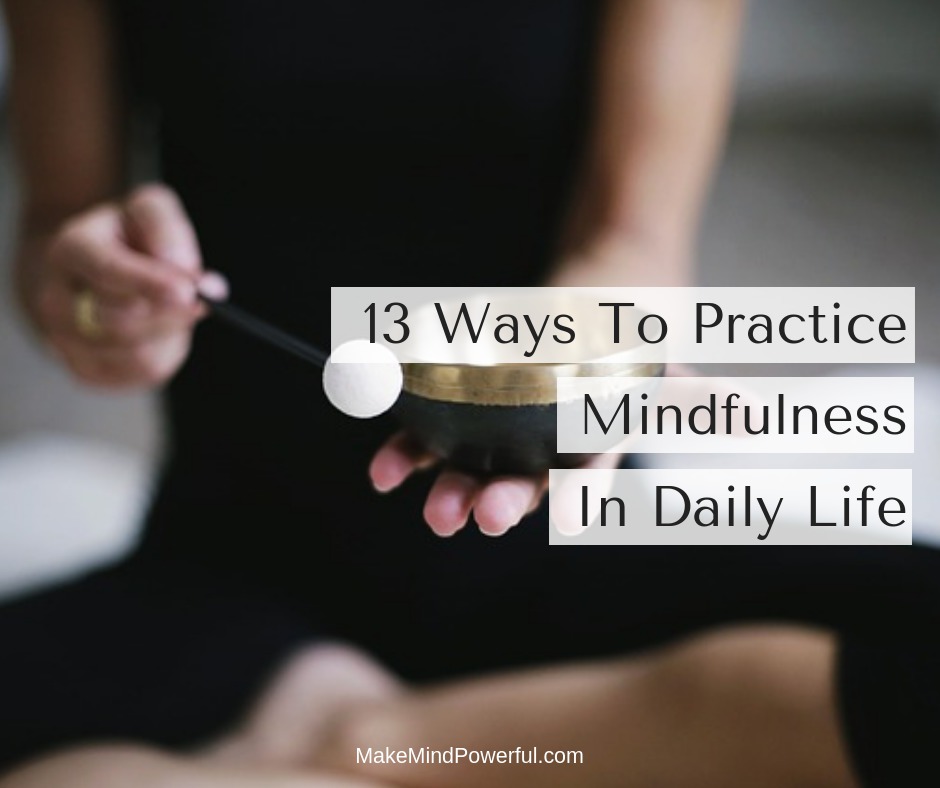

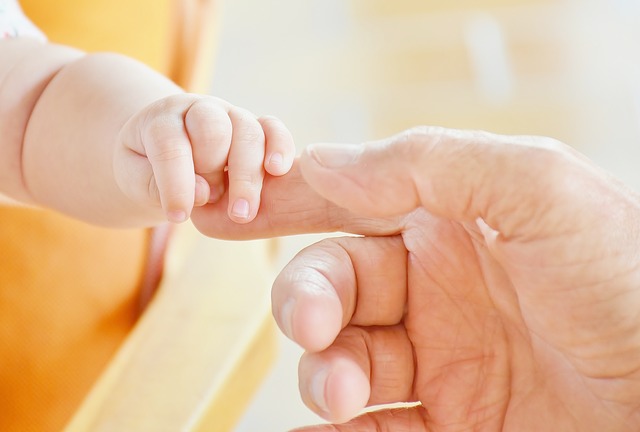
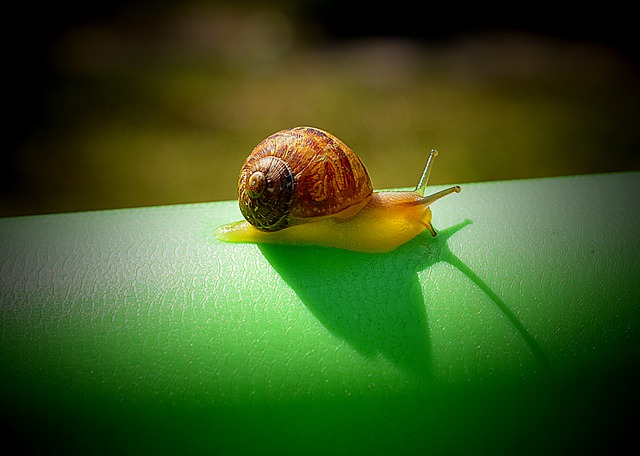


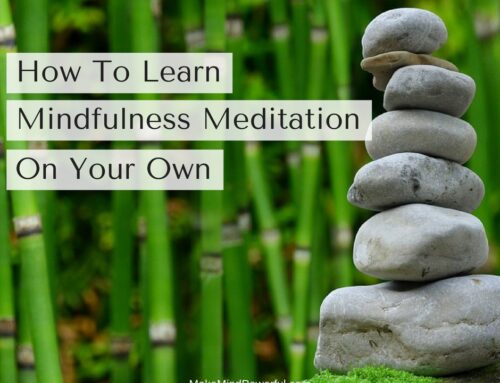
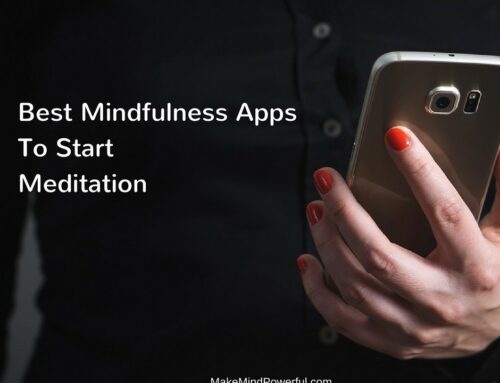
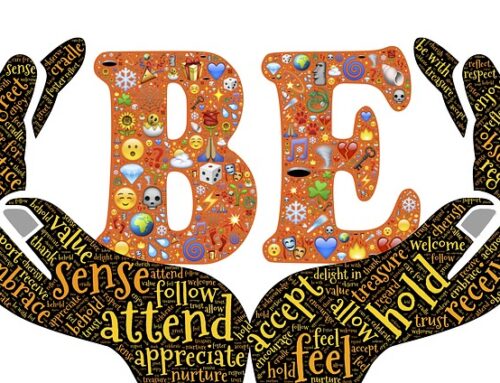
Leave A Comment